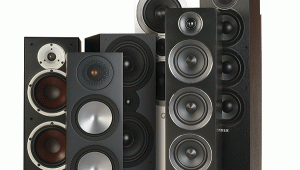Picture this: Grain versus noise

Most high-end TVs offer a dizzying array of picture-affecting controls in their user menu. So, in addition to traditional controls to adjust brightness, contrast and sharpness, users are also confronted with a multitude of other options for tweaking the image, ranging from white balance to colour management and automatic brightness adjustment. And then there's what I consider to be one of the most evil picture processing elements found on modern TVs: noise reduction.
While useful in the past to suppress noise in analogue video systems, these days noise reduction processing has been rendered largely superfluous by the arrival of HD and more recently 4K/UHD formats. No in-TV noise reduction (NR) system is sophisticated enough to reliably tell the difference between unwanted noise and fine detail that's originally present in HD and UHD content, so by engaging the noise reduction control (even at the lowest setting) on your display, more often than not you’re also scrubbing away finely textured detail.
Grain or noise?Which brings me to the subject of film grain. Many viewers are often confused between film grain and noise. The former refers to the random texture on film caused by small metallic silver grains after exposure; whereas the latter is not originally in the image, but has been introduced through digital sensor (particularly in low-light scenes), encoding, compression or other processing. Although the visible end-result is similar, an important distinction is that grain is inherent in the film, while noise is not.
The proliferation of digital media and advancements in remastering/restoration processes mean that noise seen on high-quality digital formats such as Blu-ray is likely to be film grain that’s either part of the movie or intentionally added during post-processing. Far from being a scourge as made out by certain misguided quarters, film grain is actually a good thing: it increases perceived detail and makes the picture look more 'alive' and filmic.
This concept is so profound that it’s worthwhile repeating: film grain is the image, and there's no way of removing grain without also erasing other fine details present in the picture. Switching on your TV’s noise reduction control will not only obliterate the finely textured film grain, but also smooths out actual fine detail, resulting in waxy faces and an over-sanitised appearance that can make content look like it was shot on cheap video.
The crudest method of noise reduction is a spatial filter that blurs out the entire frame – fortunately with improved video processing it's only used in the low-end cleanup of MPEG compression artefacts. The next step up is a temporal NR filter that studies and removes noise over several frames; this, however, introduces motion smearing on moving objects. The most advanced NR systems employ per-region or even per-pixel motion-adaptive filtering strategies, but the former still affects fine detail, whilst the latter is generally only available on dedicated (costly) external video processors.
HCC has regularly praised Blu-ray transfers that leave film grain intact, and chastised those featuring overzealous digital noise reduction. Along the same lines, I strongly advise you to turn off the noise reduction controls on your TV. Not only will you be rewarded with pristine image reproduction, but you'll also be paying the highest respect to the director's creative intent.
Are you a fan of film grain? Let us know your thoughts…
Email [email protected]
 |
Home Cinema Choice #351 is on sale now, featuring: Samsung S95D flagship OLED TV; Ascendo loudspeakers; Pioneer VSA-LX805 AV receiver; UST projector roundup; 2024’s summer movies; Conan 4K; and more
|






















































